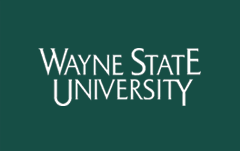High-Power, High-Efficiency, High-Power-Density, Non-Isolated Dc-Dc Converter For Fuel Cell Vehicles
Access Type
Open Access Embargo
Date of Award
January 2023
Degree Type
Dissertation
Degree Name
Ph.D.
Department
Electrical and Computer Engineering
First Advisor
Caisheng C. Wang
Abstract
This work proposes various solutions for performance, efficiency, and power density improvements of high-power interleaved boost converters (IBCs) in electrified powertrains, namely, use of SiC, LCIs, improved controller, and soft-switching. A relationship was developed for the output current calculation of an n-phase interleaved boost converter (IBC) and output DC link capacitance sizing. The semiconductor losses and efficiency in an n-phase SiC-based IBC were calculated and analyzed. The trade-off in design of an n-phase SIBC with regards to passive components requirements and sizing, passive components volume, losses, and efficiency were analytically investigated from different aspects. An n-phase SIBC was simulated at high power for different number of phases and duty cycles to demonstrate the operation of the aforementioned converter and trade-offs. In the magnetics aspect of IBC performance optimization, Loosely-coupled inductors (LCIs) current ripples in an n-phase LCI-based IBC (LIBC) were analyzed and their expressing relationships were developed. Furthermore, an analysis and relationship for sizing n-phase LIBCs based on the maximum allowed input current ripple were developed. Additionally, analysis and relationship for output current in n-phase LIBC were developed and used for output DC link capacitance sizing. An optimization scheme for design of the LCIs was proposed which could be used for optimization of volume, efficiency, weight, cost, or a combination of these objective functions. Detailed results for use of the optimization scheme for volumetric optimization under various constraints including a >99% efficiency were provided and analyzed to identify the optimal number of phases and switching frequency. An n-phase SiC-based LCI-based IBC (SLIBC) for high-power, high-efficiency, high-power applications was proposed in this work. Passive component sizing, passive components volume, losses, efficiency, and weight of the proposed converter and associated trade-offs were discussed in detail with focus on real-world applications constraints. Simulation results for n-phase SLIBC for various number of phases and operation points were provided to better demonstrate the advantages and trade-offs in the aforementioned converter. Additionally, a small-signal model for the proposed 2N-phase LIBC was developed taking into account the ESRs of the LCIs and DC link capacitors. The transfer functions of the converter were extracted and used to perform a stability analysis and investigation of the poles. the impact of coupled inductors coupling coefficients, ESR and terms generated from the linearization of equations could be shown as the disturbance signal in the state equations. These disturbance signals are functions of the state space variables of the system. Therefore, the conventional controllers like PI and cascaded (nested) loop PI controllers which control the system around its equilibrium point show weak performance in presence of these disturbances. To solve this problem, a novel cascaded loop Lyapunov-based PI controller was developed. The proposed cascaded loop structure has a simple structure which makes its implementation possible at low-cost-microcontrollers. Furthermore, the presented controller has a clear structure which helps make it easier for engineers to design and analyze the system behavior. The proposed controller was designed, simulated and compared with the traditional cascaded PI controller at real-world application operation points. The comparison showed improved response time, tracking, and lower distortions in duty cycle, phase inductor current, and output voltage. Soft-switching is another method for improvements of efficiency, power density, and EMI levels in high-power automotive non-isolated DC-DC converters. The analysis and theoretical design procedure was developed for the unidirectional version of the single-phase soft-switching boost converter presented in [133] without reverse blocking diode and based on use of SiC semiconductor devices, which was previously not conducted in the literature. Moreover, an n-phase SiC-based LCI-based IBC (SSLIBC) using the aforementioned soft-switching topology as the base module was proposed. Numerical example and simulation results were provided for the proposed SSLIBC. Finally, the experimental results were provided for an 8-phase demo of the proposed n-phase SSLIBC achieving a rated efficiency of 98.5%, peak efficiency of 99.29%, power density of 15kW/L, and weight density of 9.8kW/kg.
Recommended Citation
Abdolmaleki, Nima, "High-Power, High-Efficiency, High-Power-Density, Non-Isolated Dc-Dc Converter For Fuel Cell Vehicles" (2023). Wayne State University Dissertations. 3879.
https://digitalcommons.wayne.edu/oa_dissertations/3879
